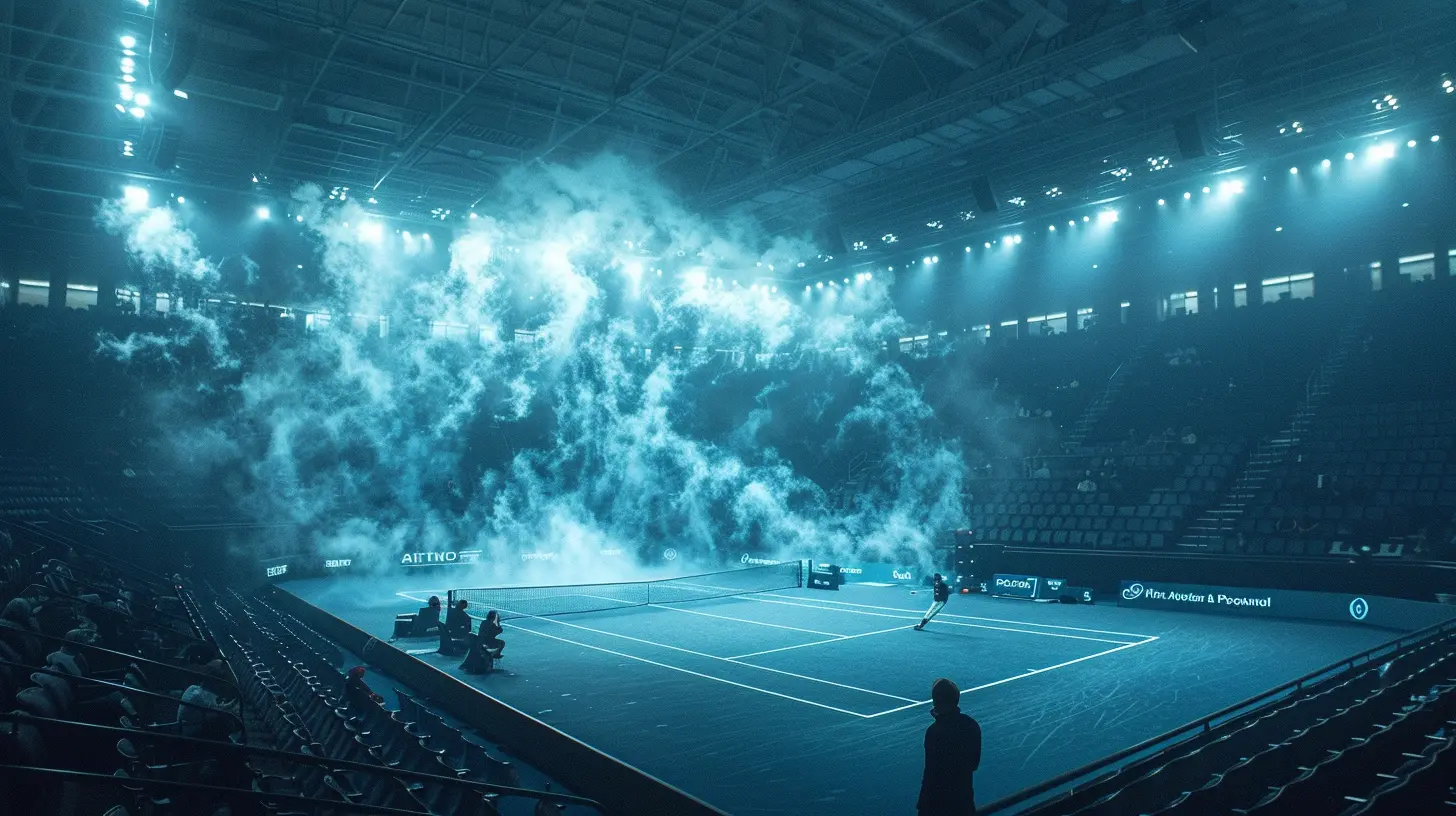How to Stay Calm Under Pressure in High-Stakes Tennis Matches
2 July 2025
Let’s be honest—pressure in tennis is real. Whether you're serving for the match or holding off match point, your palms sweat, the racket feels heavier, and your mind starts racing with a thousand "what ifs." Staying calm under pressure in high-stakes tennis matches isn't just a nice-to-have skill—it’s a game-changer. It's what separates the average weekend warrior from the true competitor. But how do you actually stay calm when everything’s on the line?
In this article, we’ll break it down. No fluff. No textbook psychology. Just real talk, practical strategies, and a bit of heart-to-heart on how to keep your cool when the scoreboard is blinking bright and the crowd’s holding its breath.
Pressure in Tennis: More Than Just a Mental Game
We tend to think pressure is all in our heads—but it's everywhere. It's in our tight muscles, our rushed serves, our hesitations. It’s the voice in your ear saying, “Don’t mess this up.”Tennis is one of those rare sports where you’re completely alone. No teammates to back you up, no timeouts to regroup. Just you, your thoughts, and a fuzzy yellow ball. That makes mental strength not just an advantage—but a necessity.
Why Staying Calm Is Your Secret Weapon
When you're calm, you're in control. Your strokes get smoother, your decisions sharper, and your breathing steadier. You can think clearly, adapt quickly, and execute the shots you’ve practiced a thousand times.Being calm isn't about being emotionless—it’s about being centered. Think of it like being the eye of the storm. The noise, pressure, and chaos are swirling around, but your core? Solid as a rock.
Signs You’re Not as Calm as You Think
Let’s do a gut check. You might be under pressure if:- You suddenly start rushing your serves
- You abandon your game plan
- Your footwork becomes sluggish
- You’re holding your breath without realizing
- You can’t stop thinking about the score
If any of these sound familiar, don’t worry. You’re not broken—you’re just human.
Step-by-Step: How to Stay Calm Under Pressure in High-Stakes Tennis Matches
Alright, let’s get into the real stuff. How can you actually train yourself to stay calm and composed when everything’s riding on the next point?1. Master Your Breathing
This might sound too simple, but it’s gold. Breathing is like your personal “reset” button during intense moments.- Try this: Inhale deeply through your nose for 4 seconds, hold for 2 seconds, then exhale slowly through your mouth for 6 seconds.
- Do it between points, before serves, or right after a long rally.
It slows your heart rate, clears your mind, and reminds your body that you're okay.
👉 Pro Tip: Pair deep breathing with a physical cue, like adjusting your strings or tapping your foot. Doing so creates a grounding routine that your brain associates with calmness.
2. Create Rituals Between Points
Ever notice how top players have little routines between points? Nadal adjusts his socks. Djokovic bounces the ball ten times. Serena takes a deep breath and looks up.These aren’t quirks—they’re tools. Rituals focus your mind, calm your nerves, and give you a familiar rhythm amidst the chaos.
- Develop a simple between-point routine: It could include towel drying, bouncing the ball a specific number of times, or a short mantra.
Consistency in routine brings consistency in mindset.
3. Practice Under Pressure (Seriously)
You can’t fake calmness—you’ve got to train it. That means intentionally putting yourself in high-pressure scenarios during practice.- Play tie-break-only matches with friends
- Practice serving with the condition that if you miss two in a row, you redo the drill
- Simulate match point situations
The more you expose yourself to pressure, the more familiar it becomes. What once felt like an unbearable weight starts to feel... normal.
4. Focus on the Process, Not the Outcome
Here's the truth: You don’t control the outcome. You control your effort, your focus, and your mindset. Take your mind off the scoreboard and put it back where it belongs—on the process.- Tell yourself: “One ball at a time” or “Win this point.”
- Celebrate small wins: a good serve, a smart shot, a calm decision.
When you focus on doing the little things right, the big things take care of themselves.
5. Positive Self-Talk: Be Your Own Hype Team
When your mind starts spiraling, your inner voice matters more than ever. If that voice sounds like your worst critic, you’re toast.So flip the script:
- Instead of “Don’t double fault,” try “I’ve hit this serve a thousand times.”
- Instead of “I can’t lose this point,” tell yourself “Let’s play with confidence.”
Your self-talk should feel like a coach in your corner, not a troll on Twitter.
6. Visualize Success Before You Step on Court
Visualization is more than a buzzword—it’s mental rehearsal. When you visualize yourself staying calm in tough situations, you’re prepping your brain to actually do it.- Close your eyes and imagine yourself playing under pressure.
- See yourself taking deep breaths, making smart choices, smiling even after losing a point.
When the real thing hits, your mind will go, “Hey, I’ve been here before. I know how to handle this.”
7. Accept Mistakes and Keep Moving
You will mess up. You will miss easy shots. You will double fault. That’s tennis. What matters is how you respond.- Don’t let one bad point become five.
- Use a “flush it” approach—acknowledge the mistake, learn from it, and wipe the slate clean.
It’s not the error that defines you—it’s the bounce-back.
8. Stay Physically Loose
Tension in the mind equals tension in the body. If your shoulders are stiff, grip is tight, and movements are jerky—you’re going to struggle.- Loosen your grip between points
- Shake out your arms and legs
- Smile—it actually tricks your body into relaxing
Staying loose means staying ready. You can’t whip a forehand if you’re clenched like a fist.
9. Keep Perspective
It’s easy to think every point is life or death. But here’s some perspective: it’s just tennis. One day, you’ll look back and barely remember who won.- Remind yourself why you love the game
- Think about how far you’ve come
- Keep humor alive—laugh at the weird bounces, the drama, the intensity. This is supposed to be fun, remember?
Pressure shrinks when perspective expands.
Real Talk: Even Pros Feel the Heat
Don’t think for a second that staying calm under pressure is only tough for amateurs. Some of the greatest players in the world have admitted to nerves, doubt, and even panic during crucial moments.What sets them apart is that they've built a toolkit to deal with it. They lean on rituals, breathing, routines, and belief. And guess what? So can you.
Wrapping It Up: Your Calm Is a Muscle—Train It
If you take one thing from this article, let it be this: staying calm is not a personality trait. It’s a skill. A muscle. The more you work it, the stronger it gets.Start small. Try one technique during your next practice. Build your rituals, find your cues, and create pressure situations proactively.
Before you know it, you’ll be the player who thrives when the match is tight, the one who keeps a smile on set point, the one who everyone wonders, "How do they stay so calm?"
Now go out there. Breathe. Trust. Play the next ball. You've got this.
all images in this post were generated using AI tools
Category:
TennisAuthor:

Nelson Bryant
Discussion
rate this article
1 comments
Wyatt Becker
Focus on your game, not the stakes. Breathe and trust.
July 14, 2025 at 4:46 AM

Nelson Bryant
Thank you! That's great advice—staying present and trusting in our skills is key to maintaining composure.


